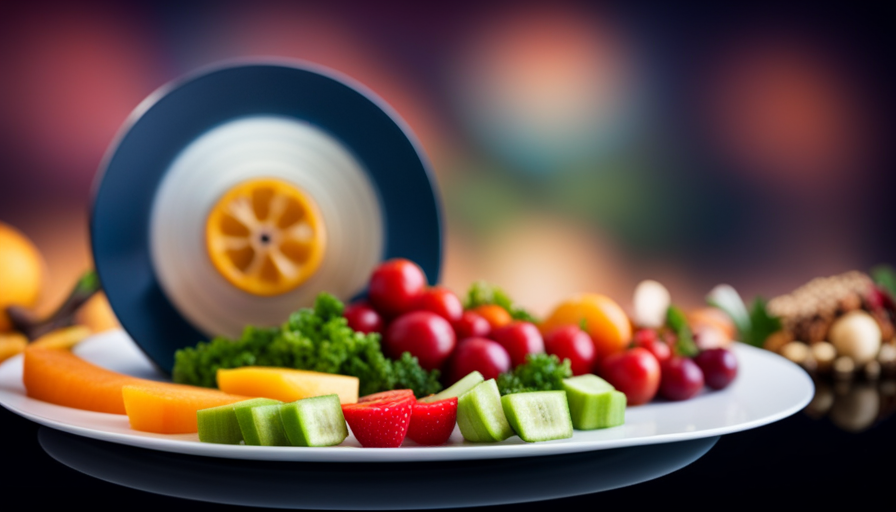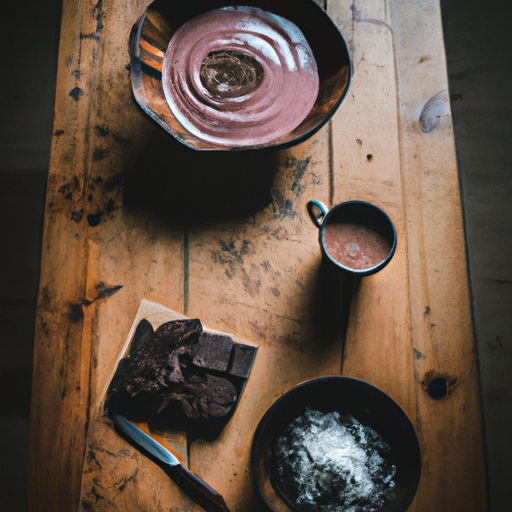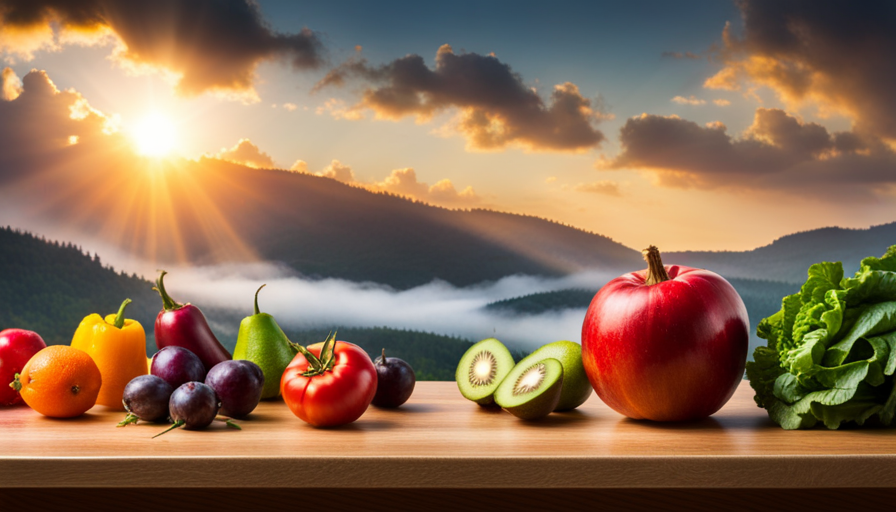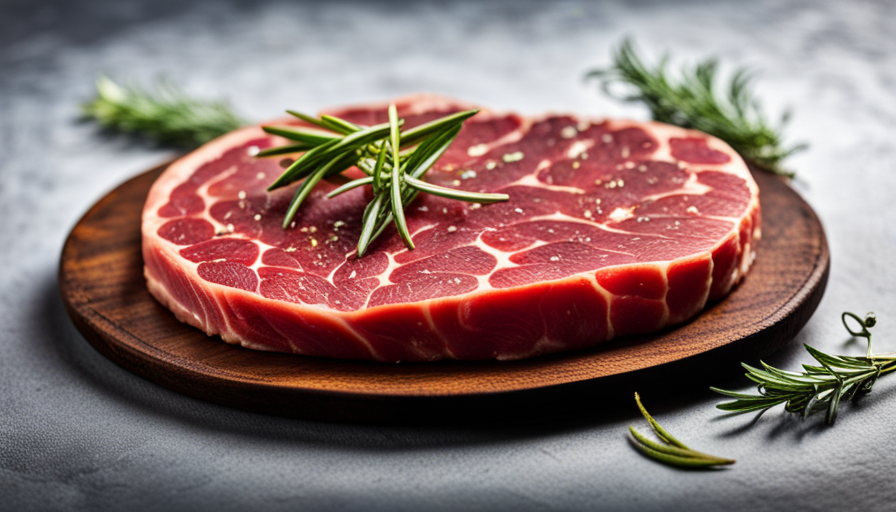Many people believe that raw food is healthier than cooked food, but recent research suggests that cooking can actually boost the nutritional content of raw food in different ways. This may be unexpected, but the science behind cooking and nutrient absorption provides a convincing rationale.
When we cook food, heat breaks down the cell walls, making it easier for our bodies to access and absorb nutrients. Additionally, certain cooking methods can boost the nutritional value of raw ingredients. For example, steaming vegetables can help preserve their vitamin content, while roasting can increase antioxidant activity. Moreover, cooking can improve the digestibility of protein and the availability of carbohydrates.
But the benefits of cooking extend beyond mere nutrient absorption. Cooking plays a significant role in cultural traditions, enhancing flavors and textures that make food more enjoyable. It also promotes digestive health by reducing the risk of foodborne illnesses.
By understanding the science behind cooking and incorporating a balance of raw and cooked foods in our diets, we can optimize our nutrient intake and enjoy the best of both worlds.
Key Takeaways
- Cooking enhances the nutritional value of raw food by breaking down cell walls and increasing nutrient accessibility.
- Cooking reduces the risk of foodborne illnesses by destroying harmful bacteria, viruses, and parasites in raw food.
- Cooking improves the digestibility of certain foods and increases the bioavailability of certain nutrients.
- Incorporating both raw and cooked foods in the diet optimizes digestion, nutrient absorption, and overall health and well-being.
The Science Behind Cooking and Nutrient Absorption
You’ll be amazed at how cooking food actually enhances the absorption of nutrients in your body, giving you a powerful boost of energy and vitality! Cooking techniques play a crucial role in increasing nutrient absorption efficiency.
When we cook food, it undergoes physical and chemical changes that make it easier for our bodies to break down and extract essential nutrients. Cooking breaks down the complex structures of proteins, carbohydrates, and fats, making them more accessible for digestion and absorption. For example, heat denatures proteins, which unravels their complex structures and makes them more digestible. This allows our bodies to absorb amino acids more efficiently, which are the building blocks of proteins.
Furthermore, cooking can increase the bioavailability of certain nutrients. Heat can break down the tough cell walls of plants, such as cellulose, making nutrients like vitamins and minerals more accessible for absorption. For instance, cooking tomatoes actually increases the bioavailability of lycopene, a powerful antioxidant.
Incorporating cooking methods that boost nutritional value, such as steaming or stir-frying, can help optimize nutrient absorption. These techniques preserve the nutrients while making them easier to digest. So, understanding how cooking affects nutrient absorption can help us make informed decisions about our food choices and cooking methods, leading to a healthier and more nourishing diet.
Cooking Methods that Boost Nutritional Value
When it comes to cooking methods that boost the nutritional value of food, three key points come to mind.
First, steaming vegetables is a great way to retain their nutrients, as it doesn’t involve the use of excessive heat or water.
Second, roasting certain foods can actually increase their antioxidant content, which is beneficial for overall health.
And finally, fermentation is a process that not only introduces probiotics into our diet, but also enhances nutrient absorption.
These cooking methods are evidence-based and provide a balanced approach to maximizing the nutritional value of our food.
Steaming vegetables to retain nutrients
To maximize the nutritional value of vegetables, steam them gently and watch as their vibrant colors and flavors intensify. Steaming is a cooking method that efficiently retains nutrients in vegetables. The gentle heat from the steam helps to break down the cell walls in vegetables, making their nutrients more accessible to our bodies.
This method also helps to preserve the natural flavors and vibrant colors of the vegetables, making them more appealing and enjoyable to eat. Steaming vegetables not only ensures nutrient retention, but it also evokes feelings of freshness, vitality, and health. The vibrant colors of steamed vegetables can be visually appealing, stimulating our appetite and making us want to eat more of them.
The tender texture and delicate taste that result from steaming can create a sense of comfort and satisfaction. Additionally, knowing that we’re consuming vegetables that have been cooked in a way that maximizes their nutritional value can provide a sense of confidence and well-being.
In the next section, we’ll explore another cooking method that can boost the nutritional content of vegetables: roasting for increased antioxidant content.
Roasting for increased antioxidant content
Get ready to level up your vegetable game by roasting them to unlock their full antioxidant potential! Roasting vegetables not only enhances their flavor and texture, but it also increases their antioxidant content.
Antioxidants are compounds that help protect our cells from damage caused by harmful free radicals. When vegetables are roasted, the dry heat causes a Maillard reaction, which leads to the formation of new compounds with increased nutritional absorption and antioxidant capacity.
Studies have shown that roasting vegetables like tomatoes, bell peppers, and carrots can significantly increase their antioxidant levels compared to their raw counterparts. These antioxidants have been linked to various health benefits, including reducing the risk of chronic diseases like heart disease and certain types of cancer.
So, next time you’re in the kitchen, consider roasting your vegetables to reap their full health benefits.
Now, let’s move on to the next section about fermentation for probiotics and increased nutrient absorption.
Fermentation for probiotics and increased nutrient absorption
Indulge in the tangy delight of fermented vegetables and unlock a world of probiotics and enhanced nutrient absorption that’ll take your health to new heights. Fermentation is a natural process that’s been used for centuries to preserve and enhance the nutritional value of food.
When vegetables are fermented, beneficial bacteria break down the sugars and produce lactic acid, creating a sour taste and a host of health benefits.
Here are some benefits of fermentation:
-
Probiotics: Fermented foods are rich in beneficial bacteria, which can help improve digestion, boost immune function, and promote overall gut health.
-
Nutrient Absorption: Fermentation can increase the bioavailability of certain nutrients, such as vitamins, minerals, and antioxidants, making them easier for our bodies to absorb and utilize.
By incorporating fermented foods into your diet, you can support your gut health and maximize nutrient absorption. This sets the stage for the subsequent section on cooking and antioxidant activity.
Cooking and Antioxidant Activity
Discover how cooking enhances the antioxidant activity in your food and boosts its nutritional value. Cooking not only changes the taste and texture of our food, but it can also have a significant impact on its antioxidant properties. Antioxidants are substances that help protect our cells from damage caused by harmful molecules called free radicals. Research has shown that cooking certain foods can actually increase their antioxidant activity, making them even more beneficial for our health.
To understand how cooking affects antioxidant activity, let’s take a look at the table below:
| Raw Food | Cooked Food |
|---|---|
| Carrots | Cooked Carrots |
| Tomatoes | Cooked Tomatoes |
| Spinach | Cooked Spinach |
Studies have found that cooking carrots increases their antioxidant activity, making it easier for our bodies to absorb the beneficial compounds such as beta-carotene. Similarly, cooking tomatoes can enhance the levels of lycopene, a powerful antioxidant that has been linked to a reduced risk of certain diseases. Cooking spinach also increases the availability of antioxidants like lutein and zeaxanthin.
In addition to boosting antioxidant activity, cooking can also enhance the immune response of certain foods and allow for greater culinary creativity. However, it is important to note that cooking methods and duration can impact the nutrient content of food. It’s all about finding the right balance between cooking and preserving the nutritional value of the ingredients.
Now let’s explore the next section on cooking and protein digestibility.
Cooking and Protein Digestibility
Transition: Now that we have explored the impact of cooking on antioxidant activity, let’s delve into another important aspect of cooking: protein digestibility.
Current Subtopic: Cooking and Protein Digestibility
When it comes to protein, cooking plays a crucial role in enhancing its digestibility. Raw food enthusiasts argue that cooking destroys the natural enzymes present in raw foods, which aid in protein breakdown. However, research shows that cooking actually improves protein digestibility by denaturing the proteins and making them easier to break down in the stomach.
Protein denaturation occurs during the cooking process as heat disrupts the structure of proteins, unfolding them and exposing more surface area for enzymes to act upon.
Here are five ways in which cooking improves protein digestibility:
-
Enhanced absorption: Cooked proteins are more easily absorbed by the body, ensuring efficient utilization of essential amino acids.
-
Increased bioavailability: Cooking increases the availability of essential amino acids, promoting optimal growth and repair of body tissues.
-
Reduced anti-nutrients: Cooking reduces the presence of anti-nutrients like trypsin inhibitors, which can inhibit protein digestion.
-
Improved taste and texture: Cooking enhances the taste and texture of proteins, making them more appealing and enjoyable to consume.
-
Increased safety: Cooking eliminates potential pathogens and harmful bacteria that may be present in raw protein sources.
Transition: Now that we understand how cooking affects protein digestibility, let’s turn our attention to the impact of cooking on carbohydrates.
The Impact of Cooking on Carbohydrates
When it comes to the impact of cooking on carbohydrates, there are several key points to consider.
Firstly, cooking can lead to starch gelatinization, which increases the digestibility of carbohydrates. This means that our bodies can more easily break down and absorb the nutrients from cooked carbohydrates.
Additionally, cooking can enhance the glycemic response and energy availability of carbohydrates, providing us with a readily available source of fuel.
Finally, certain cooking methods, such as steaming or boiling, can improve carbohydrate utilization by preserving more of the nutrients and minimizing nutrient loss.
Starch gelatinization and increased digestibility
To truly appreciate the benefits of cooked food, you must understand how starch gelatinization enhances its digestibility. Starch gelatinization is a process in which heat and moisture break down the molecular structure of starch, transforming it into a more digestible form. This transformation is beneficial because it increases the availability of nutrients in the food. When starch is gelatinized, it becomes easier for our digestive enzymes to break it down into simple sugars, which can then be absorbed by our bodies. This means that we can extract more energy and nutrients from cooked food compared to raw food.
| Starch Gelatinization Benefits | |
|---|---|
| 1 | Enhanced Digestibility |
| 2 | Improved Nutrient Absorption |
| 3 | Increased Energy Availability |
This improved digestibility and nutrient absorption is one of the key reasons why cooked food can be more beneficial than raw food. It allows our bodies to efficiently utilize the energy and nutrients present in the food. Moreover, the gelatinization of starch also contributes to a softer texture and enhanced flavors, making cooked food more enjoyable to eat. As we move on to the next section about enhanced glycemic response and energy availability, we will explore further how cooking affects the overall nutritional value of food.
Enhanced glycemic response and energy availability
The incredible transformation of starch through gelatinization brings about a delightful burst of energy and a glycemic response that’ll leave you feeling positively electrified.
When starch is cooked, it undergoes gelatinization, a process where it absorbs water and swells, making it easier for our bodies to break down and digest. This leads to an enhanced glycemic response, meaning that the carbohydrates in cooked starch are converted into glucose and released into the bloodstream more quickly, providing a rapid and sustained source of energy.
Additionally, cooking increases the availability of energy from starch by breaking down the complex structure into simpler forms that our bodies can easily absorb and utilize. This enhanced energy availability can be particularly beneficial for athletes or individuals needing a quick boost.
Transitioning into the subsequent section about cooking methods that improve carbohydrate utilization, we explore other ways to maximize the benefits of cooked food.
Cooking methods that improve carbohydrate utilization
Transition: Now that we understand how raw food can benefit from cooked food in terms of enhanced glycemic response and energy availability, let’s explore the cooking methods that can improve carbohydrate utilization.
Current Subtopic: Cooking methods that improve carbohydrate utilization
When it comes to cooking, the way we prepare our food can greatly impact our body’s ability to absorb nutrients and maintain stable blood sugar levels. Certain cooking methods have been shown to enhance nutrient absorption and improve glycemic control. For example, steaming vegetables can help break down the tough cell walls, making it easier for our bodies to access the nutrients within. Boiling and baking also have a similar effect on carbohydrates, making them more digestible and increasing their availability for energy production. By choosing these cooking methods, we can ensure that we maximize the nutritional benefits of our food.
To continue our exploration of cooking and its impact on food, let’s now delve into the crucial topic of cooking and food safety.
Cooking and Food Safety
Cooking raw food can significantly reduce the risk of foodborne illnesses. Food safety is a critical consideration when it comes to consuming raw food. While raw food diets have gained popularity in recent years, it’s important to be aware of the potential risks associated with consuming raw or undercooked foods.
Cooking methods play a crucial role in ensuring that harmful bacteria, viruses, and parasites are destroyed, making the food safe for consumption. Various cooking methods can help eliminate harmful pathogens from raw food. High-temperature cooking methods such as boiling, baking, or grilling can effectively kill bacteria like Salmonella or E. coli. These methods not only ensure the safety of the food but also enhance its taste and texture. Additionally, cooking can also help break down certain anti-nutrients present in raw food, making it easier for our bodies to absorb essential nutrients.
However, it’s important to note that overcooking or burning food can also have negative health effects. Consuming charred or burnt food can expose us to potentially harmful compounds like acrylamide, which has been linked to an increased risk of cancer.
Cooking raw food using appropriate methods is essential for food safety. It helps eliminate harmful pathogens and makes the food more digestible. While cooking is crucial, it’s also important to strike a balance and avoid overcooking. Understanding the role of cooking in cultural traditions further emphasizes the importance of this step.
The Role of Cooking in Cultural Traditions
Explore the diverse culinary traditions embedded within different cultures and discover how cooking techniques have shaped their unique flavors and textures. The cultural significance of traditional cooking techniques cannot be overstated. These techniques have been passed down through generations, carrying with them the stories, values, and identity of a community. From the slow simmering of stews in Mexican cuisine to the delicate art of sushi-making in Japan, cooking methods reflect the history, geography, and available ingredients of a region.
To illustrate the evolution of cooking methods and their impact on cultural identity, consider the following table:
| Cuisine | Traditional Cooking Technique | Cultural Significance |
|---|---|---|
| Mexican | Slow cooking in clay pots | Honoring ancient Mayan traditions |
| Indian | Tandoor oven | Symbolizing communal feasting |
| Italian | Pasta-making by hand | Celebrating simplicity and tradition |
| Chinese | Stir-frying in a wok | Emphasizing speed and efficiency |
| Moroccan | Tagine cooking | Preserving Middle Eastern heritage |
These examples demonstrate how cooking techniques are deeply intertwined with cultural practices and beliefs. Through the centuries, these methods have not only preserved culinary heritage but have also contributed to the unique flavors and textures associated with each cuisine.
As we delve into the next section on cooking and taste enhancement, we will explore how different cooking techniques can elevate the flavors of raw ingredients.
Cooking and Taste Enhancement
To fully appreciate the depth of flavors in a dish, you must experiment with various cooking techniques that enhance the taste of ingredients. Cooking techniques play a crucial role in flavor development by breaking down components in raw food and transforming them into new and complex flavors.
Heat, for example, can caramelize sugars in vegetables, resulting in a sweet and savory taste. Grilling can create a smoky flavor that adds depth to meats and vegetables. Roasting can bring out the natural sweetness in fruits and vegetables, intensifying their flavors. Additionally, techniques like marinating and seasoning can enhance the taste by infusing ingredients with various flavors and spices.
Cooking techniques not only enhance the taste of food, but they also contribute to the overall sensory experience. The aroma of food cooking can stimulate our appetite and make the meal more enjoyable. The texture of cooked food can also add another layer of satisfaction to the eating experience. Whether it’s the crispy exterior of a roasted potato or the tender and juicy texture of a perfectly cooked steak, cooking techniques can elevate the overall sensory experience of a dish.
Transitioning into the subsequent section about cooking and digestive health, it’s important to note that the benefits of cooking extend beyond taste and sensory enjoyment. Cooking can also improve the digestibility of certain foods, making them easier for our bodies to process and absorb nutrients.
Cooking and Digestive Health
In the previous section, we explored how cooking can enhance the taste of food. Now, let’s dive into how cooking can benefit our digestive health.
Cooking plays a crucial role in our gut microbiome, which refers to the trillions of microorganisms that reside in our intestines. Heat from cooking destroys harmful bacteria and pathogens present in raw food, making it easier for our gut to digest and absorb nutrients.
Additionally, cooking can break down the cell walls of plants, releasing more nutrients for our bodies to utilize.
Furthermore, cooking increases the bioavailability of certain nutrients, meaning that our bodies can absorb and use them more efficiently. For instance, cooking vegetables like tomatoes and carrots increases their lycopene and beta-carotene content, respectively, both of which are powerful antioxidants.
However, it’s important to strike a balance between raw and cooked foods in our diet. While cooking can enhance nutrient absorption, it can also lead to the loss of some heat-sensitive vitamins and enzymes. Therefore, incorporating a mix of raw and cooked foods ensures that we reap the benefits of both.
Now, let’s explore how we can strike this balance and optimize our health by incorporating both raw and cooked foods into our daily meals.
Balancing Raw and Cooked Foods in Your Diet
Let’s dive into finding the perfect harmony between fresh and prepared ingredients to create a delicious and nourishing meal for optimal health. Incorporating both raw and cooked foods in our diet is essential for optimal digestion and nutrient absorption.
Raw foods, such as fruits and vegetables, provide us with enzymes that aid in digestion and promote a healthy gut. On the other hand, cooking certain foods can increase the bioavailability of nutrients, making them easier for our bodies to absorb.
Finding a balance between raw and cooked foods is key to achieving a well-rounded diet. Raw foods are packed with vitamins, minerals, and antioxidants that are often lost during the cooking process. However, cooking can also enhance the flavors and textures of certain ingredients, making them more appealing and enjoyable to eat.
To strike the right balance, it’s important to consider our individual needs and preferences. Some people may thrive on a predominantly raw food diet, while others may find that a mix of raw and cooked foods works best for them. Experimenting with different combinations and listening to our bodies can help us find the right balance.
Incorporating both raw and cooked foods into our diet can optimize digestion and nutrient absorption. Finding a balance that works for us is key to enjoying a nourishing and delicious meal that promotes overall health and well-being.
Frequently Asked Questions
Can cooking destroy all the nutrients in food?
Cooking can indeed affect the nutrient content of food, but it doesn’t destroy all the nutrients. Different cooking methods can have varying effects on nutrient retention. For example, boiling can lead to some nutrient loss, while steaming and microwaving are gentler methods that preserve more nutrients.
It’s important to note that cooking can also enhance the bioavailability of certain nutrients, making them easier for our bodies to absorb. So while cooking does alter nutrient levels, it doesn’t completely strip food of its nutritional value.
Does cooking food always increase its antioxidant activity?
Cooking food can increase its antioxidant activity, but it depends on the cooking methods and the specific vitamins involved.
Some studies suggest that certain cooking methods, like steaming and boiling, can increase the antioxidant content of vegetables.
However, other cooking methods, like frying or grilling at high temperatures, can lead to a loss of vitamins and antioxidants.
Therefore, it’s important to choose cooking methods that preserve the nutritional value of the food.
How does cooking affect the digestibility of proteins?
Cooking food affects the digestibility of proteins through a process called protein denaturation. When proteins are heated, the weak bonds that hold their structure together break, causing the proteins to unfold. This unfolding exposes more surface area of the protein, making it easier for digestive enzymes to break it down into amino acids. Therefore, cooking can increase the digestibility of proteins, allowing our bodies to absorb and utilize the essential amino acids more efficiently.
Does cooking lead to a significant loss of carbohydrates in food?
Cooking can lead to a significant loss of carbohydrates in food. When food is exposed to heat, the high temperatures break down the complex carbohydrates into simpler forms, resulting in a reduction of their overall content.
This can be seen in various cooking methods such as boiling, baking, and frying. However, it’s important to note that the extent of carbohydrate loss depends on the specific cooking method and duration.
Is it necessary to cook all types of food for safety reasons?
It is necessary to cook all types of food for safety reasons. Consuming raw foods can pose potential health risks due to the presence of harmful bacteria and parasites. Cooking plays a crucial role in preventing foodborne illnesses by killing these pathogens and reducing the risk of contamination.
Heat treatment also helps break down complex carbohydrates, making them easier to digest and increasing the availability of nutrients. Therefore, cooking is essential for ensuring food safety and promoting overall health.
Can Cooking Raw Food Prevent Food Poisoning?
Cooking raw meat food poisoning causes can definitely prevent food poisoning. Properly cooking raw meat kills harmful bacteria and parasites that could cause illness if consumed. By ensuring that raw meat is cooked to the recommended internal temperature, you can greatly reduce the risk of food poisoning.
Conclusion
In conclusion, incorporating both raw and cooked foods into your diet can provide a range of benefits.
Raw foods offer enzymes and nutrients that can be destroyed by cooking, while cooked foods can enhance nutrient absorption and increase the availability of certain antioxidants and proteins.
The key is to strike a balance and enjoy a variety of both raw and cooked foods. So, why not explore the best of both worlds and optimize your nutrition?










